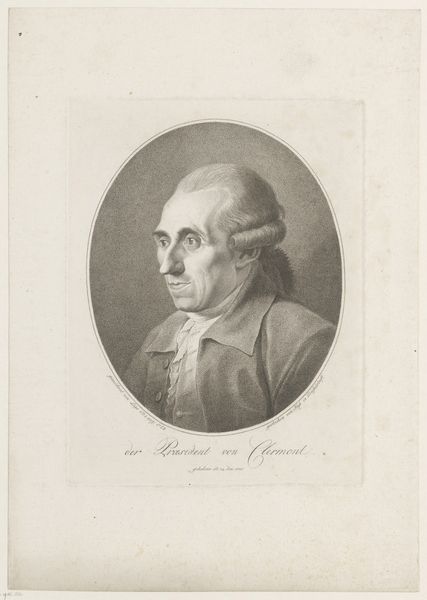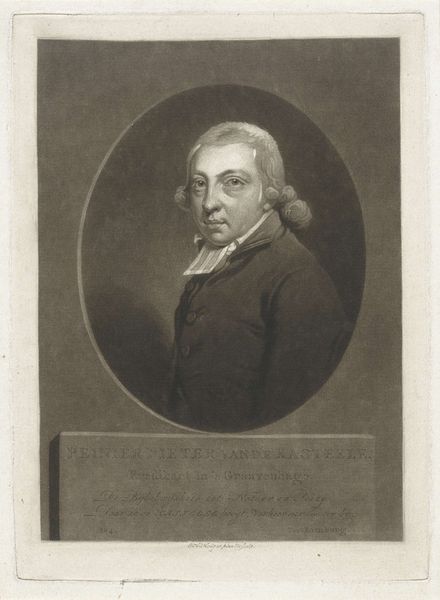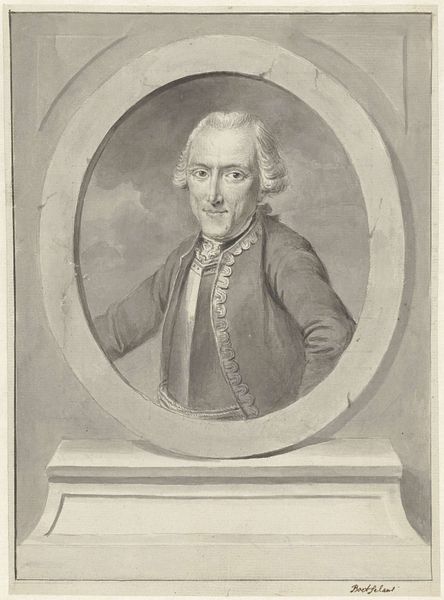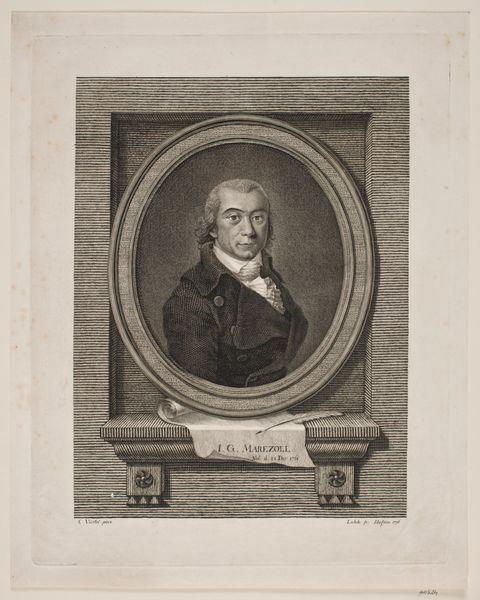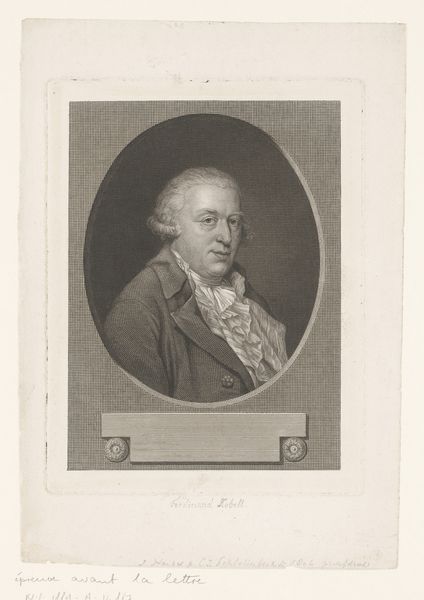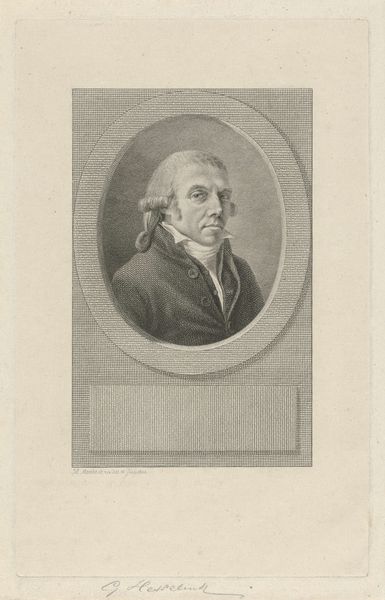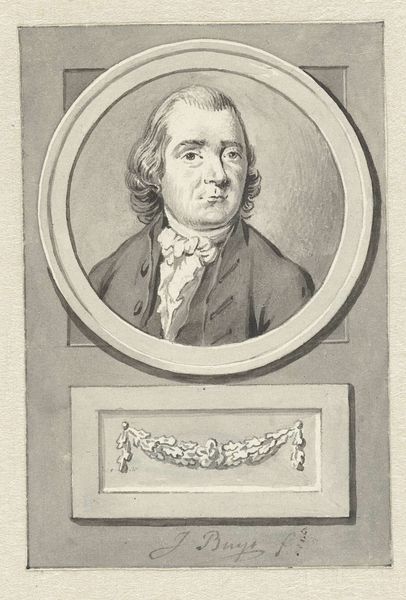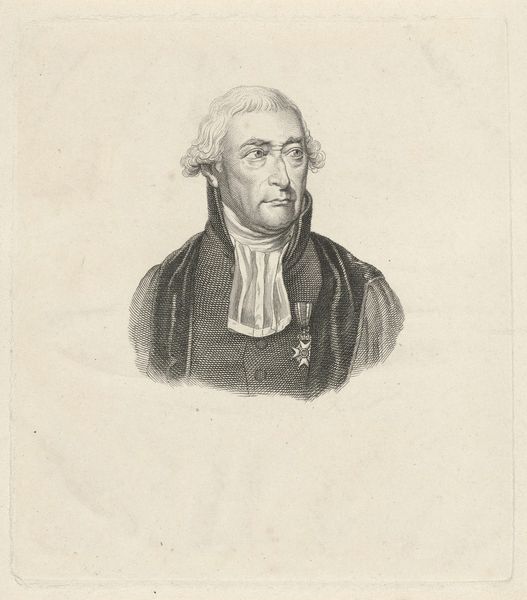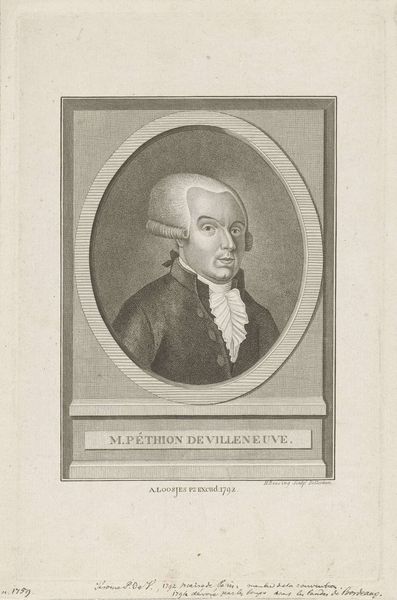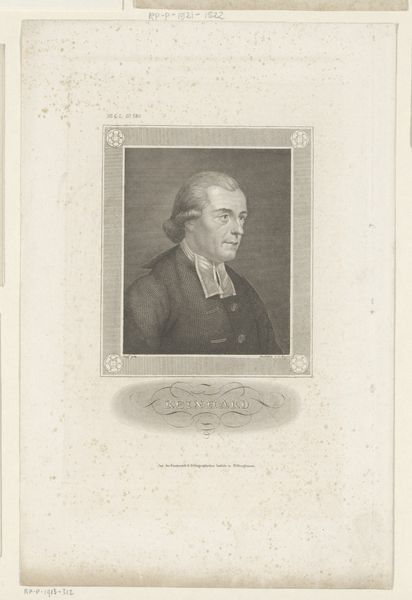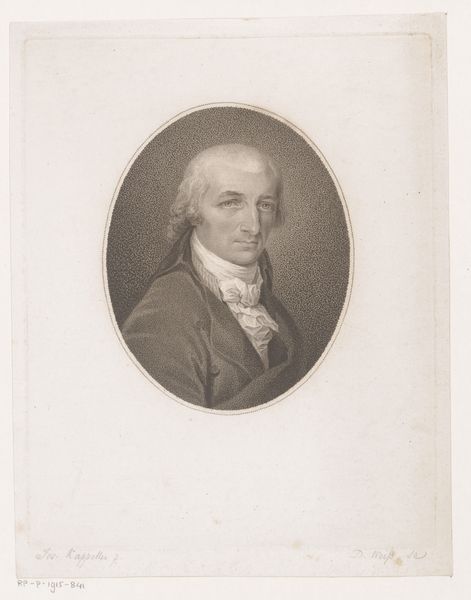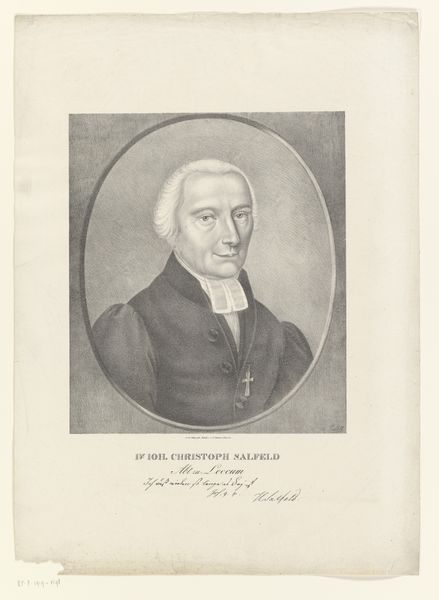
engraving
#
neoclacissism
#
old engraving style
#
traditional media
#
academic-art
#
engraving
Dimensions: height 166 mm, width 94 mm
Copyright: Rijks Museum: Open Domain
Curator: What a fascinating image! This is an engraving titled "Portret van James Lackington, boekhandelaar te Londen," created by John Goldar around 1790 to 1795. Editor: My first thought is how restrained the piece feels, particularly considering the flamboyant ascot. The precision of the lines in the engraving gives it a certain cool formality, despite the rather boastful title beneath the image, "The Cobler Turned Bookseller." Curator: Indeed. The artist employs neoclassicist principles here: a clear, linear structure, balanced composition, and an overall sense of order. Consider how Goldar has meticulously crafted the oval frame around Lackington, complete with that draped ribbon at the top and its motto: “Small profits do great things.” Editor: But even within that formal structure, the piece gives us a real sense of Lackington's self-made story, particularly when considering his previous occupation: a cobbler turned bookseller, implying both ingenuity and the rise of a particular kind of commercial class, a person capable of navigating changing market economies. The medium of engraving itself speaks to production – how these images could be reproduced and distributed to further amplify his image and brand. Curator: Excellent point. Look at the handling of light and shadow across his face, how the engraver uses subtle gradations to define the contours of his face and clothing. It reveals an underlying emphasis on rational observation that defines academic art. Notice also the text beneath the portrait—a classical Roman font. Editor: That's interesting to notice the Roman font alongside its specific claim; 'now sells One Hundred Thousand Volumes Yearly.' I find that incredibly important here, we are getting more than a mere portrait but instead, we're observing a man marketing himself through skillful image-making. It is important to recall how the raw materials of the engraving would have made the final production, we can start to speculate on what type of labor division underpinned Lackington's ambitions. Curator: Ultimately, the image presents an interesting contrast, or perhaps an intentional fusion, of personal ambition, classical idealism, and emergent capitalism within 18th-century England. Editor: Yes, by analyzing both its materials and the culture within which it was created, it certainly highlights that very shift towards something much more modern, if not brazen.
Comments
No comments
Be the first to comment and join the conversation on the ultimate creative platform.
